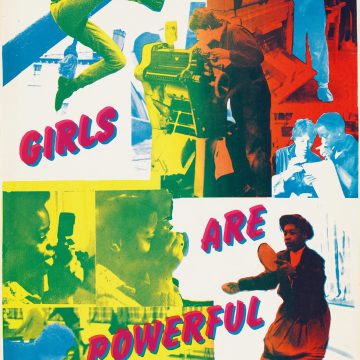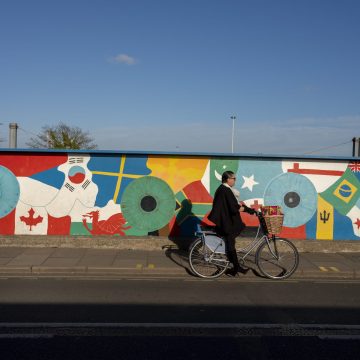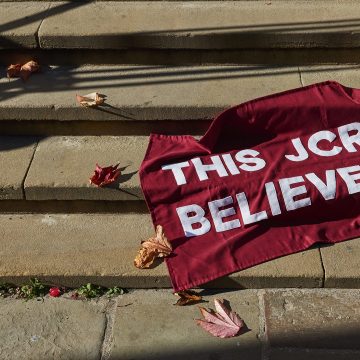Protesters of the world, arise
Online petitions. Twitter campaigns. Taking to the streets. It may feel as if everyone is agitating for something – but what is activism? And what does it really mean to be an activist? CAM investigates.
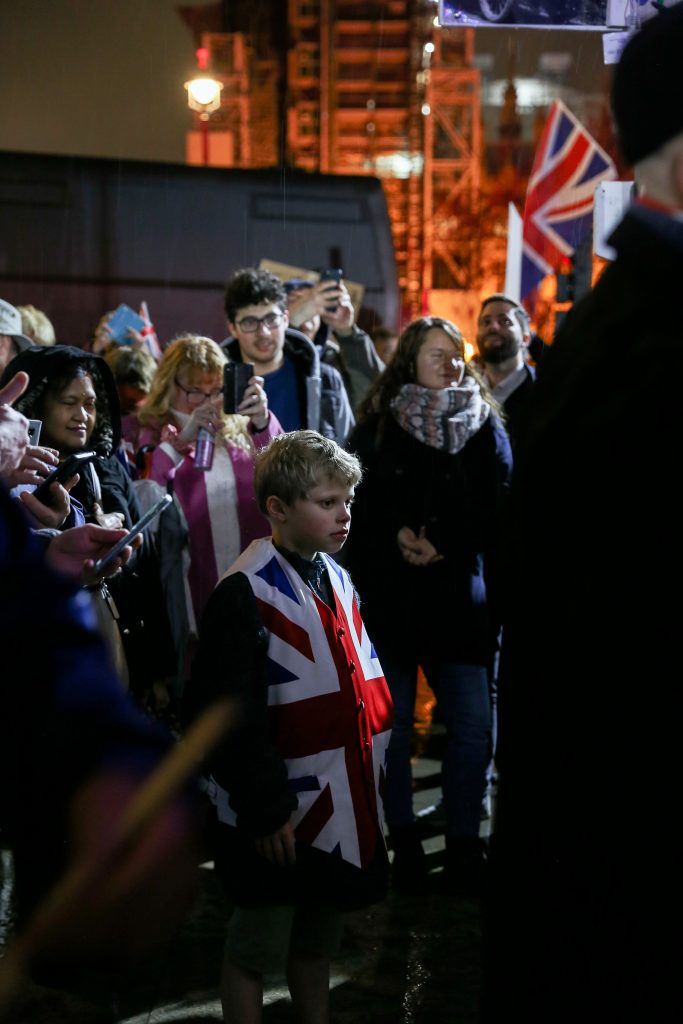
31 January 2020
A young boy takes part in celebrations in Parliament Square.
Parliament Square has had a busy few years. Protests against Brexit. Protests for Brexit. The Women’s March. Just in the past 18 months, demonstrations in London’s streets have been part of global outcries: the protests against systemic racism sparked by the killing of George Floyd in Minneapolis, within the wider Black Lives Matter (BLM) movement, and Extinction Rebellion (XR) urging action over climate change and biodiversity loss.
The latter two movements haven’t just been on our TV screens during the news. They’ve been on our streets and in our hands, an inescapable presence in the flow of social media alerts on our phones. Do they represent a new form of activism, linked to other powerful movements with political goals, such as the Arab spring and the current Hong Kong protests? Or are they simply the latest causes to be taken up by activists and protesters?
Attempting to answer this question requires precision, says Dr Ben Abrams, Director of Studies in Sociology at St Catharine’s and a specialist in mass mobilisation. “Activism and protest are things people do; revolutions are things that happen,” he says, “and distinguishing between activism and protest is also useful. You can protest without being an activist. Protest is about making your voice heard, whereas activism is more considered and involved, blending ideas and complicated actions.”
Abrams says that the George Floyd protests and XR “bucked the trend” in terms of how activist movements often operate because they didn’t depend on pre-existing networks of organisations. Instead, both movements, he points out, got people to show up by “making spaces that were attractive and disruptive, that drew people in. They used sudden moments of popular convergence to create a bigger resource.”
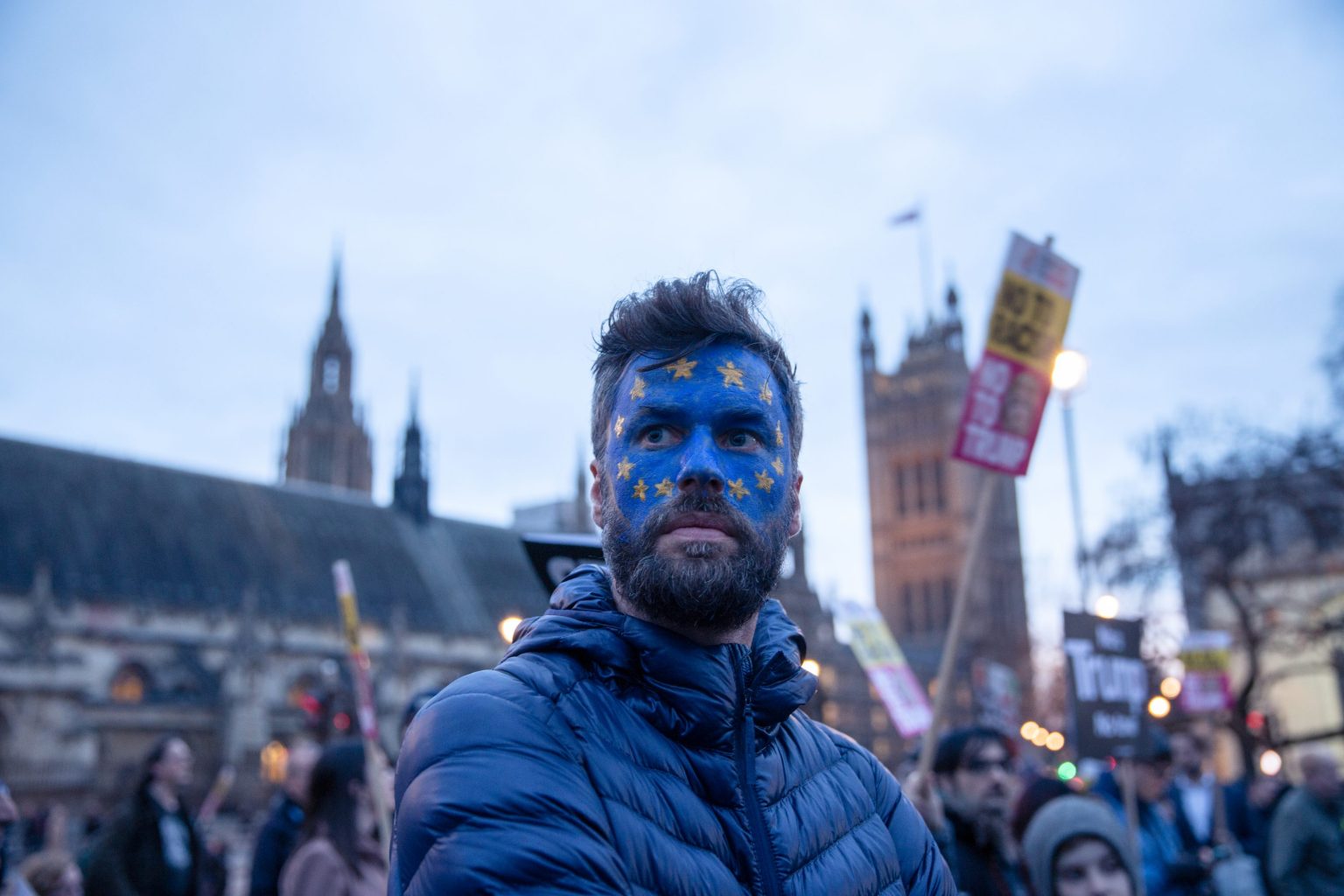
20 February 2017
A protester in Parliament Square demonstrates against a proposed state visit by Donald Trump.
Sharon Mehari, a second-year student at Caius and President of the University’s African Caribbean Society, pinpoints that ‘moment’ as the shared mobile-phone footage of George Floyd’s horrific killing by Minneapolis police. “That video was nine minutes long. You could see his innocence, and even his life leaving him. There was no defence – people who might be questioning ‘What was he doing?’, well, it was all there. And there’s the fact it happened during the global pandemic, when we were realising there is more to life than your job, beauty, music and the media. Our society is obsessed with shock in an uncomfortable way, but that shock pulled us to our senses.”
In parts of the US, protesters were accused of turning violent, with some commentators seeking to demonise or discredit the movement. But the extent to which justifiable anger can shade legitimately into non-violent and even violent disobedience is a question activists have long had to wrestle with. “When, in the 1990s, I first became interested in critiques of globalisation,” recalls activist Anthea Lawson (Queens’ 1994), author of forthcoming book The Entangled Activist, “I was going on protests and saw people smashing windows at McDonald’s and thought, ‘That’s not going to change anything’. I wanted to ‘be in the room’ [with policymakers and powerbrokers]. So I tried being in the room, and I did that for years.”
“Meetings and white papers and briefings are really good for specific things. Ultimately, though, they don’t challenge the status quo. We would still be burning ourselves out of a habitable planet”
The route Lawson took as an individual was also being adopted by entire campaigning sectors. During the 1970s, Greenpeace had pursued a direct-action campaign, Save the Whales. But, by the following decade, the wider environmental movement decided that confrontational strategies “weren’t working to bring about effective change within governments and corporations”, says Dr Chris Sandbrook of the Department of Geography, lead researcher on the Future of Conservation project, the first large-scale global survey of conservationist values. “So a process began to reframe conservation concerns in the context of human concerns, using concepts such as natural capital, corporate partnerships and market-based instruments to give conservation economic value. It started a trend to take off the protest overalls and put on a suit and tie; to have a meeting inside an office rather than chaining oneself to the gates outside it.”
“Meetings and white papers and briefings are really good for specific things,” says Lawson, who investigated the arms trade and natural-resource exploitation for organisations including Amnesty International and Global Witness, and whose work on transparency in company ownership has led to new laws in dozens of countries. “Ultimately, though, they’re not challenging the status quo. OK, I can get laws changed, great. But I was painfully conscious that I could achieve all my aims on a strategy plan, yet we would still be burning ourselves out of a habitable planet.”
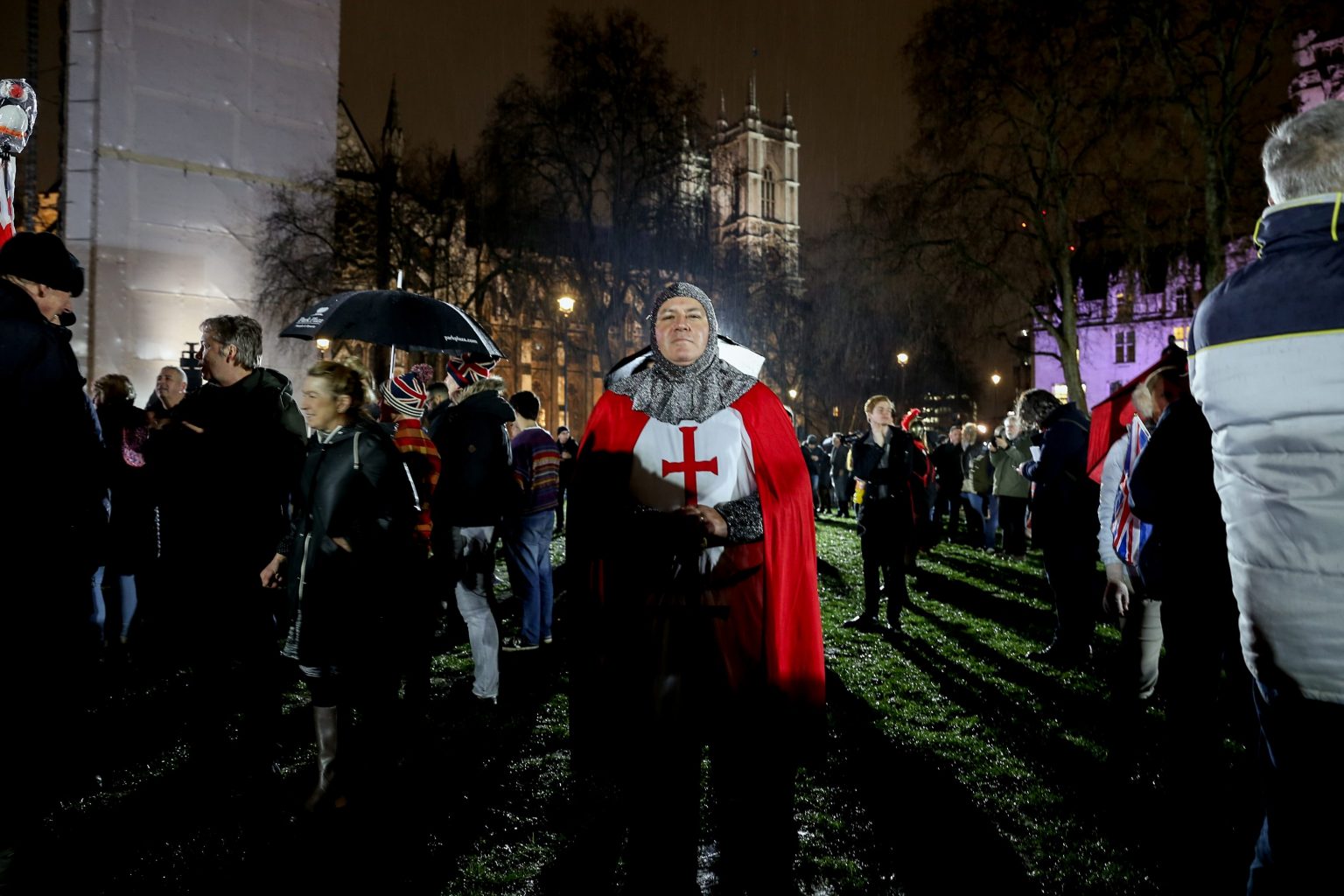
31 January 2020
A supporter dressed as St George celebrates the UK’s exit from Europe among hundreds of others in Parliament Square.
Sandbrook agrees that while the policy-forward approach to activism “worked to an extent – it got conservation issues on to the agenda at the World Economic Forum, for example – it hasn’t really worked because we still have biodiversity concerns. Then along come new protest-led movements such as XR where activists don’t necessarily have an understanding of the science, but have passion and a willingness to put themselves at risk, whether of being arrested or losing their job. Conservationists have been having a lot of conversations about how we should respond to things like XR. Many are supportive of the objectives but not of the means, such as lawbreaking.”
Something crucial, though, has changed. This high-stakes activism isn’t simply “reinventing the wheel”, as Sandbrook puts it. Decades ‘in the room’ with corporate and government stakeholders have brought a fundamental new insight to activism that could change everything.
For a long time, many people “didn’t believe our institutions to be actively opposed to solving problems like racism and climate change”, says Abrams. “But the police were originally designed for a racist society, when no one cared about brutality. Modern capitalism was built around near-limitless access to fossil fuels. And now that we realise that, we can’t just tell the people in power to not be racist, not to burn fossil fuel. We’re finally becoming aware that we need to examine the institutions themselves.”
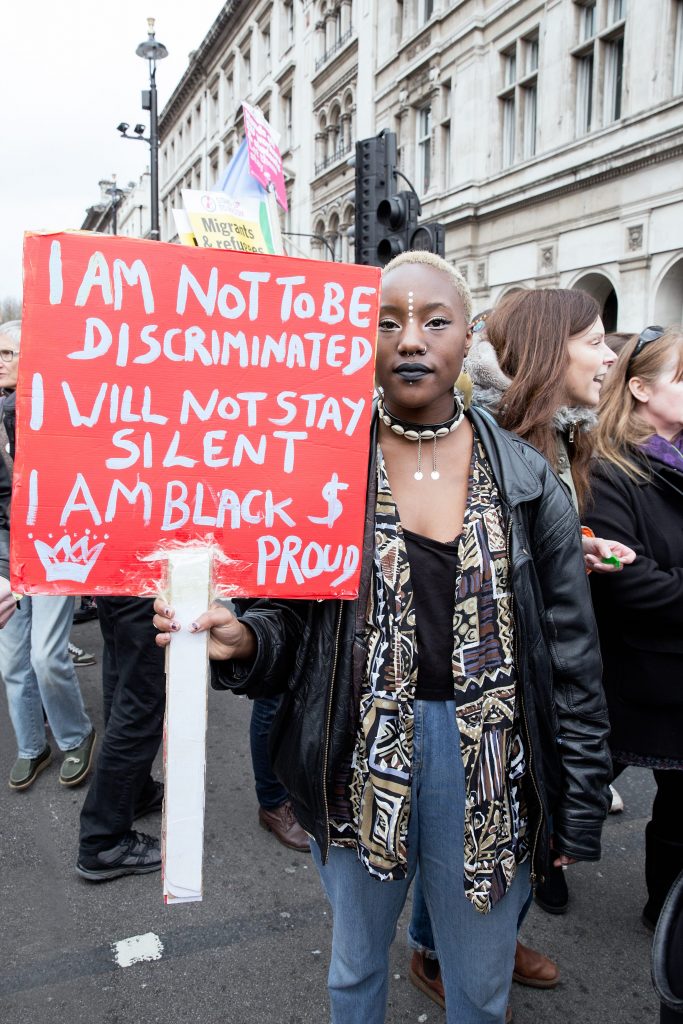
18 March 2017
An anti-racism protester holding a sign while taking part in a march to Parliament Square.
It’s this awareness that is prompting calls to defund the police in the US, and to decolonise the curriculum in British schools and universities. Such demands are not new. In 1935, African-American sociologist WEB Du Bois called for “abolition democracy” to remove institutions such as prisons and white police forces. But what has changed, says Lawson, is activism’s blowing away of what she calls the “fog of consent” that has hitherto enveloped those unaffected by oppressive structures. “What appears through the fog,” she says, “are the people who have always been calling for these changes.”
The larger-scale the objective, the harder it is to win – partly because the number of antagonists massively multiplies
The task for would-be activists now, she says, is to perceive themselves with equal clarity. Many campaigners “can see the centuries of damage and horror caused by colonialism and enslavement, and might be working to overturn these histories and their current manifestations in inequality and poverty”, says Lawson. “But for those who have benefited from these histories, it is harder to see how racist and hierarchical thinking may be manifesting in their own interactions with the people they think they are trying to help – or, indeed, that the entire frame of ‘helping’ is suffused with unhelpful notions.”
Mehari saw this first-hand at a recent BLM protest where the demonstration had concluded “and organisers were saying ‘We need to disperse now, or we won’t get a permit again’, but these young white girls just sat in the street laughing and chanting. There’s still a lot of pseudo-activism that is surface-level and palatable. People who are not reading, not doing the work, not having those uncomfortable conversations.” For Mehari, despite having been born “in the middle of revolution and activism” in Eritrea, in a family opposed to the country’s regime, “I realised if it wasn’t something to do with my identity, with refugees, with black people, with women, I wasn’t on it. But increasingly I have been challenged to speak out against things that don’t directly relate to my own identity or people I know.”
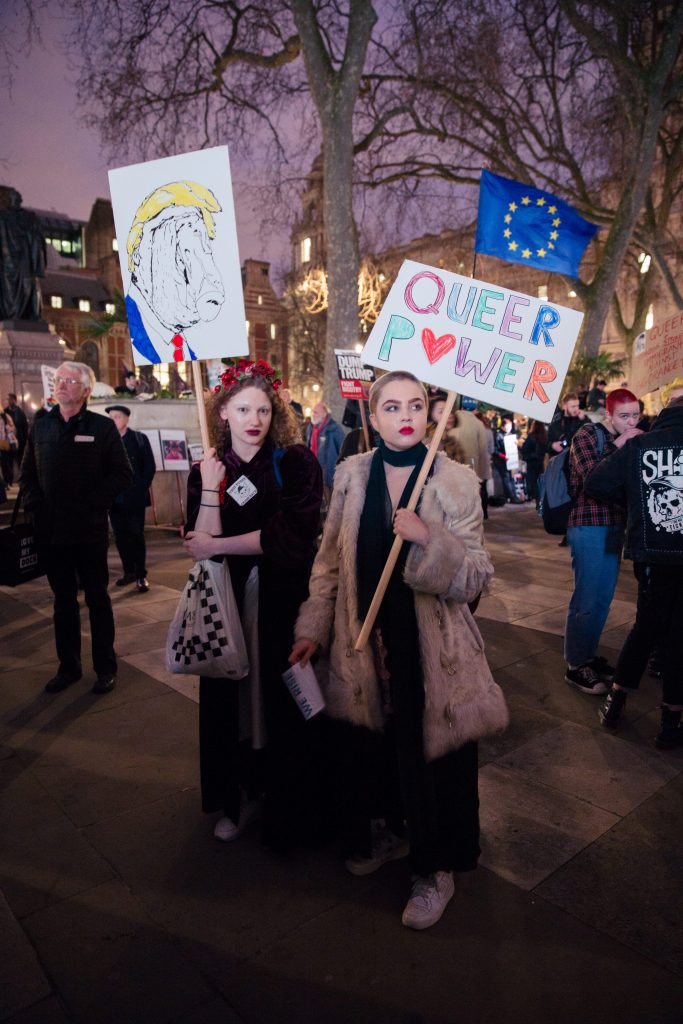
20 February 2017
Demonstrators protest against Donald Trump’s treatment of the LGBTQI+ community.
“The larger-scale your objective, the harder it is to win,” says Abrams. That’s partly because “the number of antagonists massively multiplies. Challenging global capitalism, for example, puts you up against billionaires, businesses, governments.” And it is partly because huge movements draw in people who may not have much in common, and who will go their separate ways once their specific demands have been met. “With [Joe] Biden in the White House, many of those who want brutality to end but don’t back the defunding of police will see their goals achieved. They’ll depart,” predicts Abrams.
Which is why veteran campaigner Lawson believes activism needs to radically reframe its definition of success. “The question ‘Why is it so hard to change things?’ comes from a mindset that says you have to achieve an impact for something to be worth doing,” she says. “If you have to be sure that what you’re going to do will change things, then perhaps we’re getting attached to the idea of putting our name on it. Sometimes we need to get involved just because it’s the right thing to do.”
“The things that we’ve been protesting about are not new,” says Mehari. “They’ve been going on for hundreds of years. Successful activism now is about exposition and accountability. It is about taking personal responsibility, and all of us exposing injustice wherever it is seen.”


